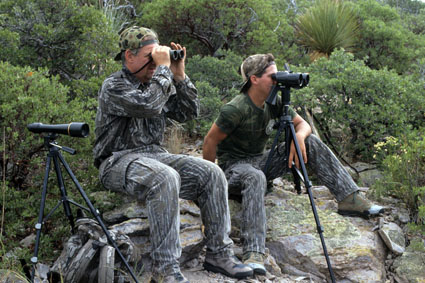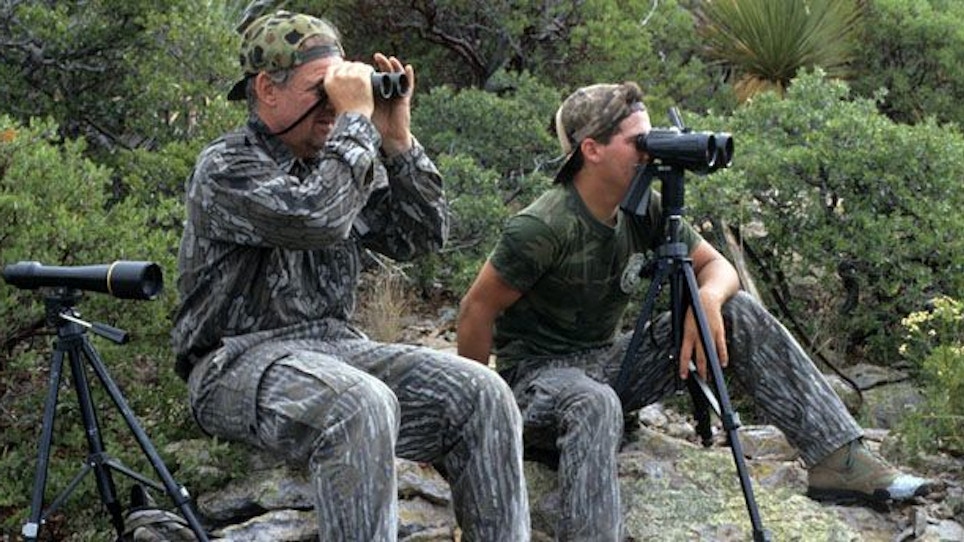 Go for binocular models in a 10-power instead of standard 8-power to cover the West’s vast distances. Buy the best glass you can afford. |
Optics, glassing, and Western big game are essentially inseparable. The West is made of wide-open and vast vistas, game highly scattered across rough, often trackless terrain. The foolhardy hunt by brawn alone—savvy bowhunters use optics, covering considerably more country in less time. Binoculars help bowhunters find distant game initially, field judge trophy animals, check on bedded deer during a stalk, or track bugling bulls while dogging through thick cover. Without binoculars you’ll wander aimlessly, depending on luck instead of skill.
Compactness is more important for Eastern whitetail hunters. Archers need to easily stash their glass after quickly investigating a suspicious flicker or watching bucks after a hit. The West offers more challenging circumstances. Glassing distances are normally measured in thousands of yards rather than woodlot widths. There hunters need something ruggedly dependable and steady that does not induce eyestrain or nausea after a couple hours of use.
The West requires greater magnification, something in 10-power instead of standard 8-power models. Steadiness and high power should automatically come with larger objective lenses, something like 10x40, 10x42, or 10x50. Such designs gather more light, penetrate shadow, and are brighter and clearer in general.
In many Western situations binoculars with even more power are welcomed. Binoculars in the 12- to 20-power range are used in open country where glassing distances stretch into miles, where vegetation, terrain, and game prove tedious and a closer look is necessary. These are ideal for southwestern Coues whitetail, mountain muley, and prairie pronghorn habitats—anywhere treacherous terrain makes glassing first before taking a treacherous hike a good idea. A 15x60 binocular mounted atop a tripod is a highly common configuration for such situations. Any glass greater than 12 power simply cannot be held steady by hand, as each heartbeat will blur the image.
In the West, your binoculars practically live around your neck. They receive plenty of abuse. This is no place for a wimpy set of discount store binoculars. In optics you get what you pay for. There are no true bargains in optics. You might buy five sets of discount-priced binoculars to get you through as many seasons as a single set of top-drawer glass. Viewed from this perspective, quality glass costs no more over the long haul. It seems $750 to $1,000 is the base price for a truly useful pair of rubber-armored Western binoculars today. There are a few shining stars in the American arena, but the Germans and Austrians typically dominate the high-end binocular market. The best names are well-known and worth every penny.
Quality optics for productive Western big game hunting aren’t cheap, but to make your hunts as successful as possible are worth the considerable investment. Bite the bullet and buy the best you can, and you’re nearly guaranteed to see more Western game this season.






